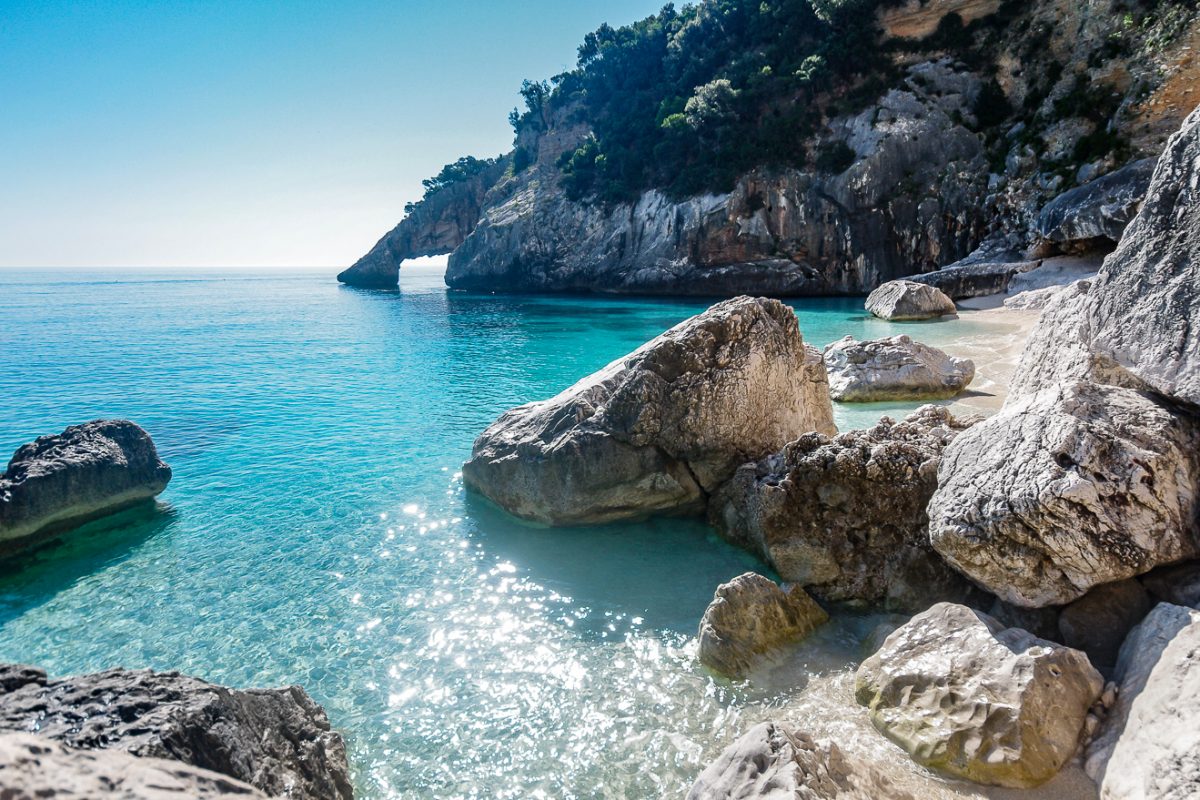The marine protected areas (MPA) in Sardinia are truly important treasures which protect and preserve the biological diversity and the immense natural heritage of the popular Italian holidays island in the Mediterranean sea. There are numerous interesting research activities on local fauna and flora, as well as education and awareness programs for everyone.
In Italy these areas are classified into different categories: so in the highest protected ones (A) any activities are forbidden, meanwhile for the other ones exist regulations concerning swimming, fishing and boat transit.
Why should I visit a marine protected area?
Visiting a MPA in Sardinia means staying in close contact with an amazing nature and discovering a very special and rare marine flora of the Mediterranean sea. It is a form of sustainable tourism that respects the natural beauties of the territory and the environment.
If you are on holiday in Sardinia, we recommend to visit at least one of it’s marine protected areas, perhaps on foot or by boat. There are a large number of organized boat trips (in general half-day): Often this is the only way to discover the best beaches and the most mysterious bays of Sardinia’s varied coastal stretch.
Sardinia has 9 fascinating nature reserves
The holiday island offers a total of six marine protected areas, a nature reserve and two national parks along its diverse coastline: No matter where you are vacationing, you should definitely plan a visit.
Starting from northern Sardinia, clockwise you will find the marine reserve Capo Testa – Punta Falcone and the La Maddalena Archipelago National Park, in the east the marine reserve Tavolara – Punta Coda Cavallo and the Gulf of Orosei – Gennargentu National Park, in the south the marine reserve Capo Carbonara and the marine reserve Capo Spartivento, in the west the marine reserve of the Sinis peninsula – Mal di Ventre, in the northwest the marine reserve of Capo Caccia and finally the unique marine area of the island of Asinara.
The marine reserve of Capo Testa – Punta Falcone
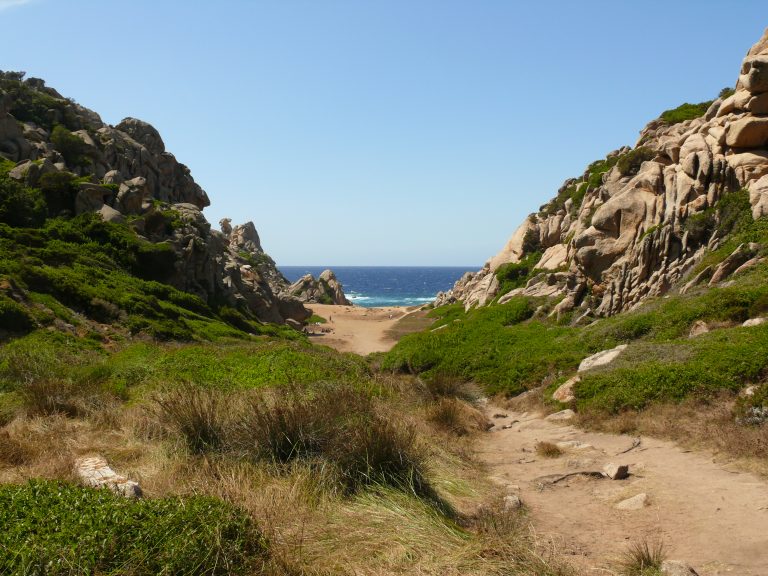
The protected area of Capo Testa is located near Santa Teresa di Gallura in northern Sardinia. The coastal landscape of this area is characterized by fascinating granite bays. In terms of the marine biodiversity, visitors who want to dive in these waters can admire the red and soft coral, called Alcyonacea, and the large brown grouper.
Capo Testa overlooks the Strait of Bonifacio, to which it is connected by a narrow isthmus. Well known is the beach of Cala Grande, known also as the Valle della Luna (en: moon valley), characterized by a crystal clear sea and rocky walls that turn white when lit by the moon. Since the late 1960s, this area has been home to a group of hippies and naturists who helped keep it pristine. There is also an old lighthouse open to public on the promontory, from which you can enjoy fantastic views of nearby Corsica.
The National Park of the La Maddalena Archipelago
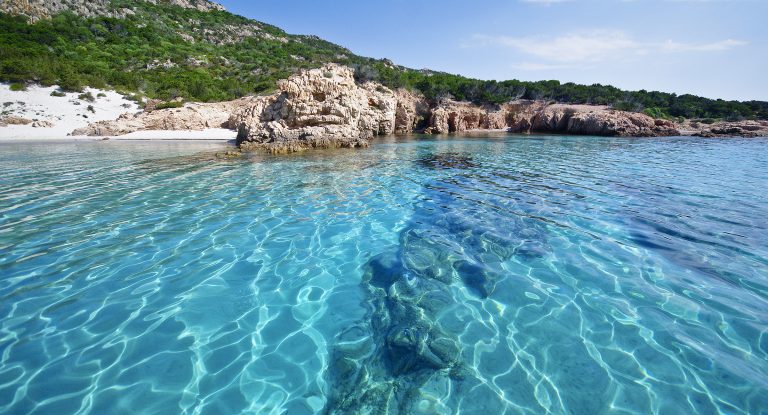
La Maddalena National Park, established in 1994, comprises more than 60 islands, some of them really small. The best known are Caprera, Razzoli, Budelli, Spargi, Santa Maria and Santo Stefano. To protect as best the uique and characteristic flora and fauna of the area, all boats which access the marine park area must obtain an authorization and navigating, stopping, mooring and anchoring is not allowed in MA zones, the highest protected ones. Anchoring is only permitted in MB zones for small craft. In addition the speed limit for vessels navigating within 300 metres of the coast is reduced to 7 (seven) knots.
When you dive in the waters of the archipelago, you can admire the famous auricle, the largest conch in the Mediterranean, which is also found in other marine areas of the island. If you are lucky, you can also admire dolphins and sea turtles.
The marine reserve of Tavolara – Punta Coda Cavallo
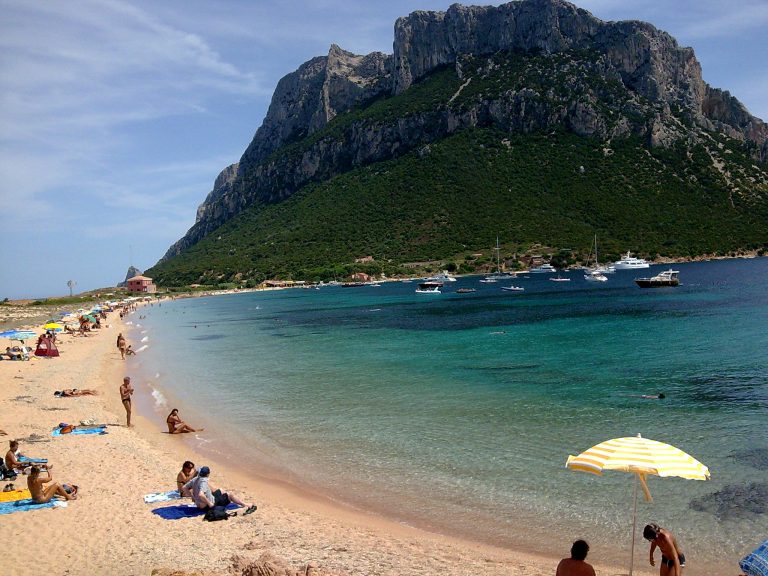
The protected area of Tavolara – Punta Coda Cavallo is located on the northeast coast of Sardinia between Capo Ceraso and Cala Finocchio (close to San Teodoro) and includes the islands of Tavolara, Molara and Molarotto. Tavolara is the main attraction of the region: it is an imposing granite island that protrudes from the sea and is overgrown with juniper, rosemary and mastic.
You can also visit the nearby islands of Molara and Molarotto, as well as the small islands of Porri and Drago to reach Capo Coda Cavallo. These places are ideal for boat trips where you can snorkel and spot some beautiful sea animals.
The Gulf of Orosei and Gennargentu National Park
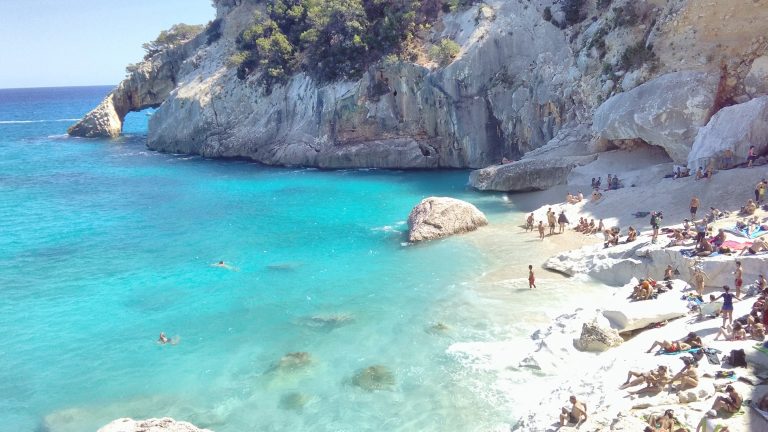
The National Park of the Gulf of Orosei and Gennargentu was established in 1998 and is located on the east coast between Orosei and the Gennargentu mountain range. It is a very suggestive and varied area, ranging from the typical landscape features of the mountain to the cliffs overlooking the sea.
If you are on activity holidays on the east coast, don’t forget to plan a trip to Su Gorropu, the largest canyon in Europe, and to visit to the nuragic village of Tiscali.
The beautiful beaches of the Gulf of Orosei that are part of the reserve include the beautiful Cala Mariolu, Cala Goloritzé, Cala Sisine and Cala Luna. You can visit these bays, some of them only accessible from the sea (or on winding paths), with boat tours, for example from Cala Gonone and Orosei.
The Capo Carbonara marine reserve
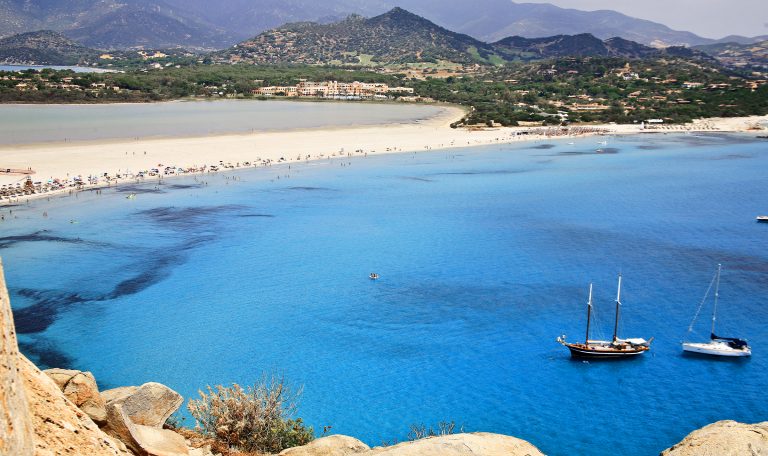
The Capo Carbonara Park is located in southeastern Sardinia and extends from Capo Boi to the Serpentara Island, including the Cavoli Island and the shallows of Berni, Mezzo and Santa Caterina, the latter being the destination of a religious procession every July. Those who dive here with professional guides can discover barracudas, large groupers and much more.
In the municipality of Villasimius, a famous tourist resort in southeastern Sardinia, you shall visit the beach of Porto Giunco, an area of soft white sand that plunges into an infinite blue sea.
Several strong storm surges have also destroyed ships here, so the wrecks are a particularly popular destination for divers: among others, you can discover an Aragonese sailing ship, the Egle steamship that was destroyed in the shallows of Santa Caterina in 1943 and the Elba ferry that sunk in Capo Carbonara.
The Capo Spartivento marine reserve
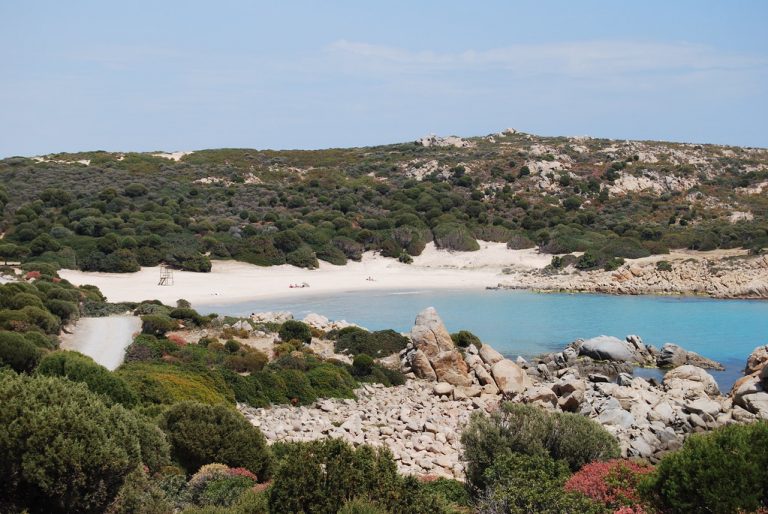
This is the youngest marine reserve in Sardinia. The area is located on the promontory of Capo Spartivento in south-west Sardinia and includes Domus de Maria and the beaches of Chia, like the famous one of Cala Cipolla, surrounded by rugged granite rocks and Mediterranean scrub.
In the west, on the other hand, are the I Padiglioni rocks, which can be reached only by boat or via somewhat difficult paths.
An attraction here is the Capo Spartivento lighthouse, one of the oldest in Sardinia that is still in operation. Part of the lighthouse now serves as a luxury hotel.
The Sinis Peninsula Marine Reserve – Mal di Ventre Island
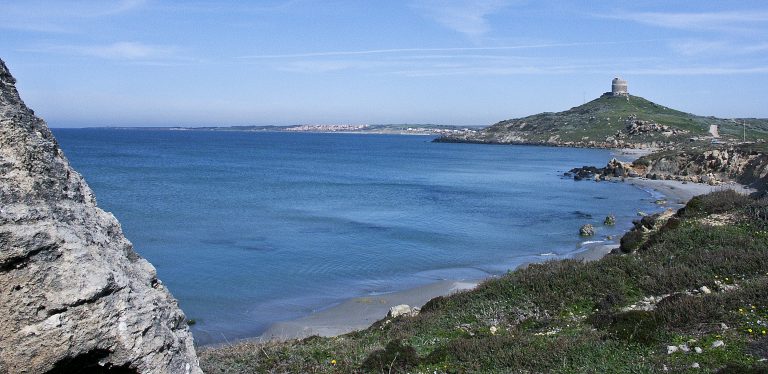
This marine area is located on the west coast in the municipality of Cabras and includes the marine areas of the beaches of the Sinis Peninsula, the island of Mal di Ventre and the Scoglio del Catalano rock.
We recommend to visit the archaeological sites such as Tharros and Monti Prama, as well as the wonderful beaches that stretch from the Capo San Marco promontory along the coast to the cliffs of Su Tingiosu.
With a boat you can explore the uninhabited island of Mal di Ventre (“stomach pain”). The curoius name is the result of an incorrect translation of the Sardinian Malu ‘Entu (“bad winds”), which refers to the persistent winds that often make navigation in this area dangerous.
So over the years, these strong winds have destroyed numerous ships, including a vaporetto moored in the magnificent Cala dei Pastori. On the island, we recommend not to miss the Punta Libeccio and Cala Valdaro beaches, characterized by white quartz. Divers get their money’s worth here, there are crabs, fish and even dolphins.
The Capo Caccia marine reserve
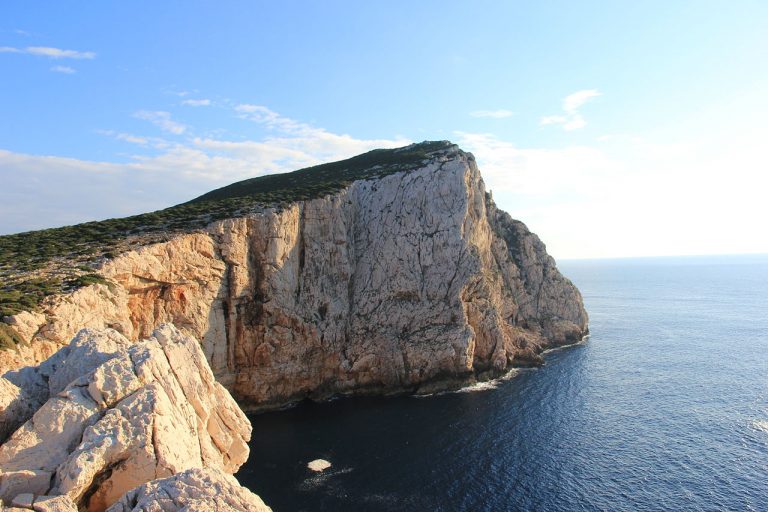
The protected marine natural area of Capo Caccia is located in the northwest near Alghero. Originally founded only in the area of Capo Caccia and the island of Piana, today it also includes the Gulf of Porto Conte and Punta Giglio. Of particular naturalistic and geological interest the Porto Conte forest, where various species like the Sardinian deer and donkeys are at home.
At Capo Caccia you can admire the Neptune Grotto (Grotte di Nettuno), which can be reached by boat from the port of Alghero or on foot via the famous Escala del Cabirol.
The Isola dell’Asinara marine reserve
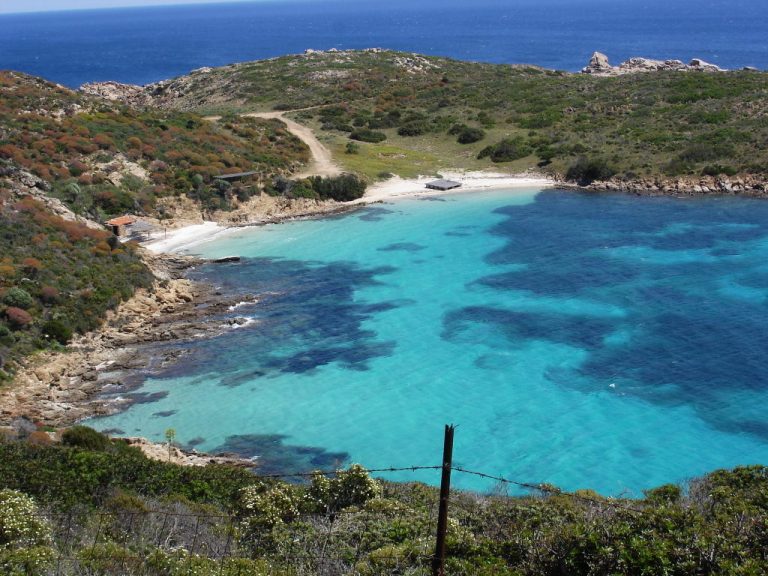
Cala Sabina, Isola Asinara
The protected marine area of Asinara is part of the municipality of Porto Torres in north-western Sardinia. It is a marine area of considerable interest that has different formations: the west side is characterized by steep slopes overlooking the sea, while the east side consists of flat coasts that gently slope into the water.
During your visit you will discover that the Asinara has an interesting history in addition to a spectacular natural landscape. Inhabited since prehistoric times, controversial during the time of the Maritime Republics of Genoa and Pisa, the government established an agricultural penal colony and a quarantine hospital for tuberculosis patients here in 1885.
More recently, from the 1960s to 1997, Asinara was a high security prison, where Mafia bosses such as Salvatore Riina were imprisoned.
It is probably thanks to this isolation that the nature reserve remained intact and thus enabled the establishment of a national park and marine reserve. In short, Asinara, despite its small size, is a gem full of history, culture and nature where you can really experience a lot. As a rule, you should organize excursions here in advance, as the number of visitors is limited.
 it
it de
de nl
nl en
en fr
fr
